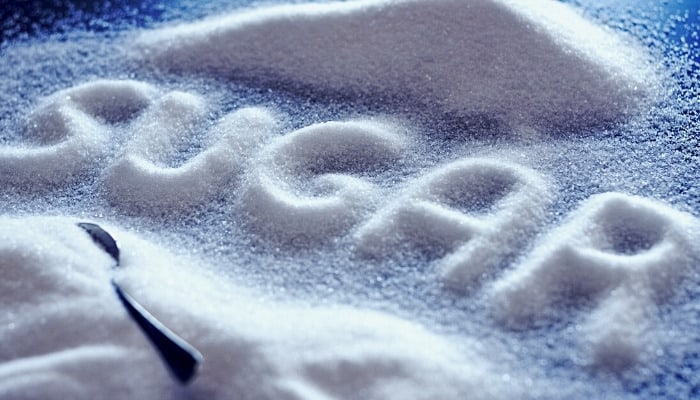If you experience a lack of energy, indulging in a sugary treat can give you a slight boost. Similarly, it can be assumed that adding a little bit of sweetness to your plants may also improve their vigor.
Some gardeners recommend it, but is this wise?
Is sugar good for plants? In struggling seedlings and plants that are dying off, sugar (in diluted form) can provide a short-term boost by supplementing a plant’s naturally occurring sugars and encouraging microbial activity in soil. Introducing excess sugar to healthy developed plants, however, can damage or even kill them.
Sugar can be too much of a good thing – although it can carry surprising benefits – so before you commit unintentional herbicide, let’s find out a little more about how plants use sugar, how to apply it safely, and other plant-bosting alternatives!
Sugar for Plants: What To Know
As with human consumption, sugar has its benefits in small doses and is crucial to plant development in its natural form. Let’s look at how it works and how it may be used.
What Sugar Does for Plants
During photosynthesis, plants draw carbon dioxide and water from the air and soil, which – combined with sunlight – splits the water into atoms that form starch and glucose.
These naturally occurring sugars establish the plant’s cells, roots, stem, and leaf development
When you add sugar to developing plants, this affects their ability to take in water. However, it can help plants that are beginning to wilt and die off.
Is Sugar a Fertilizer?
Sugar provides a temporary energy boost, but it can’t strictly act as fertilizer since it contains no nutrients.
However, as sugar is a carbon, it can improve soil structure by allowing microorganisms to build biomass, which has been found to increase crop yields for some in the bio-farming industry.
Is Sugar Water Good for Plants?
Sugar water provides energy to plants at the seedling stage that are struggling to develop, and the water content can help ones lacking in moisture (wilted, browning leaves).
When Adding Sugar May Be Beneficial
Sugar can be a lifeline to plants that are dying off by supplementing their natural sucrose.
It can also help to counter excess nitrogen in the soil as the carbon content works with microorganisms to decompose nearby nitrogen.
A study has even found sugar to be an effective natural form of weed control since it can reduce seed germination in some species.
When Adding Sugar May Be Harmful
If it ain’t broke – don’t fix it! Plants that are developing well indicate that extra sugar is not necessary, so introducing some will only damage them by choking the roots and inhibiting water/nutrient uptake.
You’ll know you’re applying too much when your plants appear wilted, have yellowing leaves, or blooms appear sparse shortly after use.

What Plants Like Sugar Water?
Sugar can benefit most plants in their juvenile stage when used in diluted amounts (see How to Feed below).
Sugar water may also help your cut flower arrangements live a little longer as it’s similar to the preservative used by florists.
Do Plants Grow Faster With Sugar Water?
Though not at the rate of traditional fertilizer, sugar water feeds beneficial soil microbes, which in turn feed the plant by breaking down organic matter, so you may notice lusher, faster growth.
This is more noticeable in potted/container plants as these lack access to naturally occurring sugars in the earth.
Will Sugar in the Garden Attract Pests?
Yes, sugar can invite unwanted aphids, gnats, ants and flies to your garden plants, especially if you apply it as a foliar spray instead of directly in the soil.
If you have trouble with pest infestations, you can place a sticky fly trap near your plants to reduce numbers.
How To Feed Sugar Water to Plants
You can use a commercial dilutable plant boost or easily make your own sugar water:
- Add 32 ounces (4 cups) of water to a pan, and bring it to the boil.
- Next, add ¼ cup of granulated sugar (white or brown), and add this to the water, stirring in well with a wooden spoon until the sugar has completely dissolved.
- Remove the pan from the stove, and set it aside to allow the solution to cool to room temperature (around 30 minutes or so).
- Once cooled, transfer the solution to your favorite watering can, and apply it your plants at soil level no more than once every 2 weeks (on struggling seedlings or dying mature plants only!).
Other Options To Give Your Plants a Boost
Fertilizers provide plants with vital nutrients. If you’ve neglected regularly feeding your plants, this is the way to go.
Compost tea, worm casting tea, flat club soda, banana peels (buried nearby in-ground plants), and coffee grounds are other great ways to give your plants a lift as they enrich the soil with many beneficial macro and micronutrients.
Related Questions:
Can Molasses Be Used as a Fertilizer?
Yes, molasses is rich in iron in addition to potassium, calcium, magnesium, and other nutrients that promote the growth of beneficial soil microbes.
Be sure to use unsulfured blackstrap molasses on your plants as sulfur is a preservative that will kill microbial activity.
Is Table Salt Good for Plants?
Common table/sea salt (sodium chloride) is not advised for plants as it is often used as an herbicide.
Applying salt directly into the soil will draw moisture from plant cells, burn the roots, and drastically alter the surrounding soil pH.
To fertilize with sea salt, always dilute, and mix with water-soluble fertilizer first.
Wrapping It Up
If your plants appear in dire need of an energy hike, applying a sugar solution may rekindle some of their vigor, but since plants already contain natural sugars, it’s a pretty delicate balance.
As it lacks nutrients, sugar can’t replace traditional fertilizer and won’t ever substitute the boost that regular watering, adequate sunlight, and plant food will do for your greenery, so use it sparingly!

